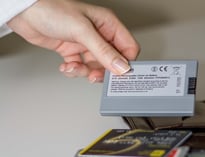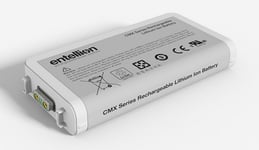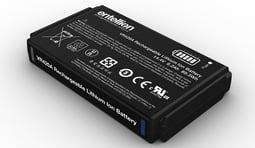 Since 2019, a Formula 1 rule states that the fastest lap winner of each race gains a bonus point, encouraging drivers to get to the finish line sooner every lap.
Since 2019, a Formula 1 rule states that the fastest lap winner of each race gains a bonus point, encouraging drivers to get to the finish line sooner every lap.
As an OEM, you may wonder how this relates to you, but battery designer and manufacturer Accutronics Ltd have noticed the same principal for the OEMs who operate in our fields of expertise (military, medical and robotics).
After all, you want to get your device to market as soon as possible to beat the competition.
So how can you speed up the battery selection and integration process? One way is using off-the-shelf batteries.
1. Don’t forget the battery!
 Ready… Set… Go! You’ve got the go ahead from management, now to turn an idea for your next medical device, military equipment or robot into a feasible mechanical design. Everything is going well and you are well ahead of the competition but then you are suddenly forced to STOP, as you failed to consider the battery. Potential pitfalls include having no room left to house it or insufficient power for the demands of the device. The battery is as crucial to the functionality of your end-product as the engine in an F1 car.
Ready… Set… Go! You’ve got the go ahead from management, now to turn an idea for your next medical device, military equipment or robot into a feasible mechanical design. Everything is going well and you are well ahead of the competition but then you are suddenly forced to STOP, as you failed to consider the battery. Potential pitfalls include having no room left to house it or insufficient power for the demands of the device. The battery is as crucial to the functionality of your end-product as the engine in an F1 car.
 However, do not worry if you have forgotten; Accutronics’ Entellion products are pre-engineered and therefore have no research and development time. Where space is tight, credit card batteries have been designed with a small footprint as low as 54.2mm x 54.2mm, so can fit into tighter spaces more easily (such as next-gen, handheld devices). Alternatively, VR series batteries have moulded features on the side making them hot-swappable and allowing them to be easily inserted into a device using rails if required.
However, do not worry if you have forgotten; Accutronics’ Entellion products are pre-engineered and therefore have no research and development time. Where space is tight, credit card batteries have been designed with a small footprint as low as 54.2mm x 54.2mm, so can fit into tighter spaces more easily (such as next-gen, handheld devices). Alternatively, VR series batteries have moulded features on the side making them hot-swappable and allowing them to be easily inserted into a device using rails if required.
 For larger devices where power overtakes the need for room, CMX series batteries are an excellent choice, offering 28.8V. To make integrating the battery into the device easier, mating halves are available in numerous styles to suit any orientation and configuration in the product.
For larger devices where power overtakes the need for room, CMX series batteries are an excellent choice, offering 28.8V. To make integrating the battery into the device easier, mating halves are available in numerous styles to suit any orientation and configuration in the product.
Should you wish to embed the battery charger, this also has a low footprint of 120mm x 60mm, although options for charging outside the product are available. In addition to aiding with the integration, battery management software set-up can also be completed by our engineers, along with any aftermarket care during the lifetime of production.
2. Ensure compliance!
 Chequered flag… The finish line/product launch is in sight. The last thing you want is to have to slam on the brakes because the battery fails to meet its legal requirements. There are so many Rules & Regulations governing the use of medical, military and robotics batteries in terms of safety, transportation and performance that it is worth speaking to a specialist like Accutronics Ltd who can arrange for any necessary qualifications and testing. After all, you wouldn’t take a Ferrari around the track if it hadn’t had a test drive first.
Chequered flag… The finish line/product launch is in sight. The last thing you want is to have to slam on the brakes because the battery fails to meet its legal requirements. There are so many Rules & Regulations governing the use of medical, military and robotics batteries in terms of safety, transportation and performance that it is worth speaking to a specialist like Accutronics Ltd who can arrange for any necessary qualifications and testing. After all, you wouldn’t take a Ferrari around the track if it hadn’t had a test drive first.
The beauty with Entellion products is that they have already been certified to UN 38.3 (transportation) and IEC 62133 (safety) requirements. It should be noted that, with transportation, there can added delays when trying to ship on land, air or sea.

In the Entellion range, both CMX and VR series’ products contain less than 100Wh of energy, which means they can be transported by air without having to be consigned as fully regulated Class 9 dangerous goods.
CMX batteries also boast active and passive protection systems to ensure safety during transportation, storage and use.
Get the fastest lap time from design to production to market...
- Consider the battery from the initial design phase, ensuring that size and performance requirements are met.
- Speed up the process further by researching whether the ideal power product is available pre-engineered, off-the-shelf.


